Writers@Work: How Picture Books Build Character
12 May 2021
Dear Readers,
I am absolutely thrilled to host the cover reveal for my friend and colleague Sandy Brehl’s debut picture book, IS IT OVER? It’s beautiful, just like the story inside!
IS IT OVER? (Written by Sandy Brehl and Illustrated by Rebecca S. Hirsch) is a picture book celebrating how telling stories can help us connect with each other and overcome fear. I had the honor of reading the story in manuscript format, and I found the story to be so moving. I can’t wait to hold a hard copy in my hands and read it again.
Until then, we have an extraordinary opportunity today to see the cover and hear from the author. First, the cover.
Ta…da!
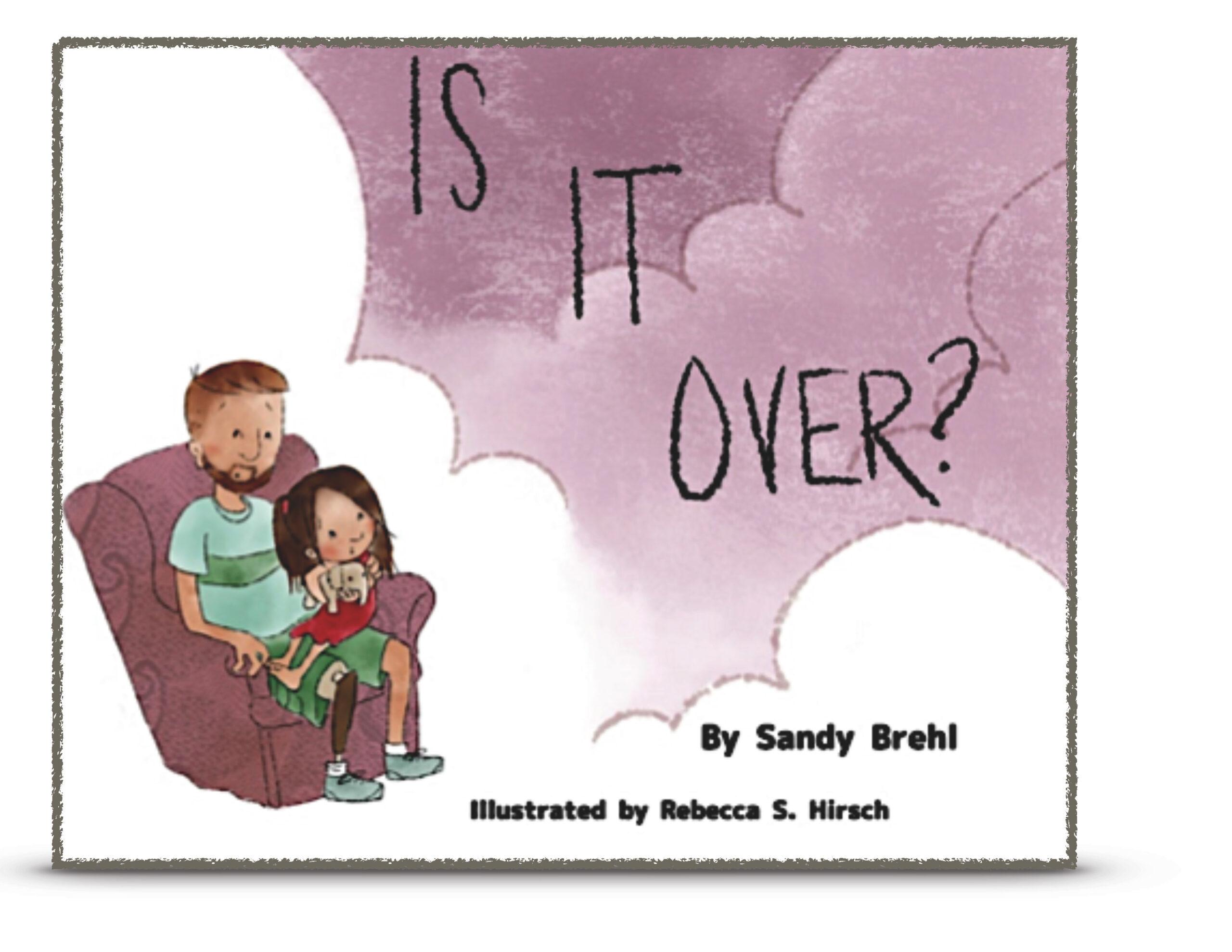
Isn’t that perfect? And now an interview with the author. Tune in to learn more about how this book came to be, why we need multiple books on a single topic, how books can build character, and how to make your words more powerful.
Enjoy!
Rochelle
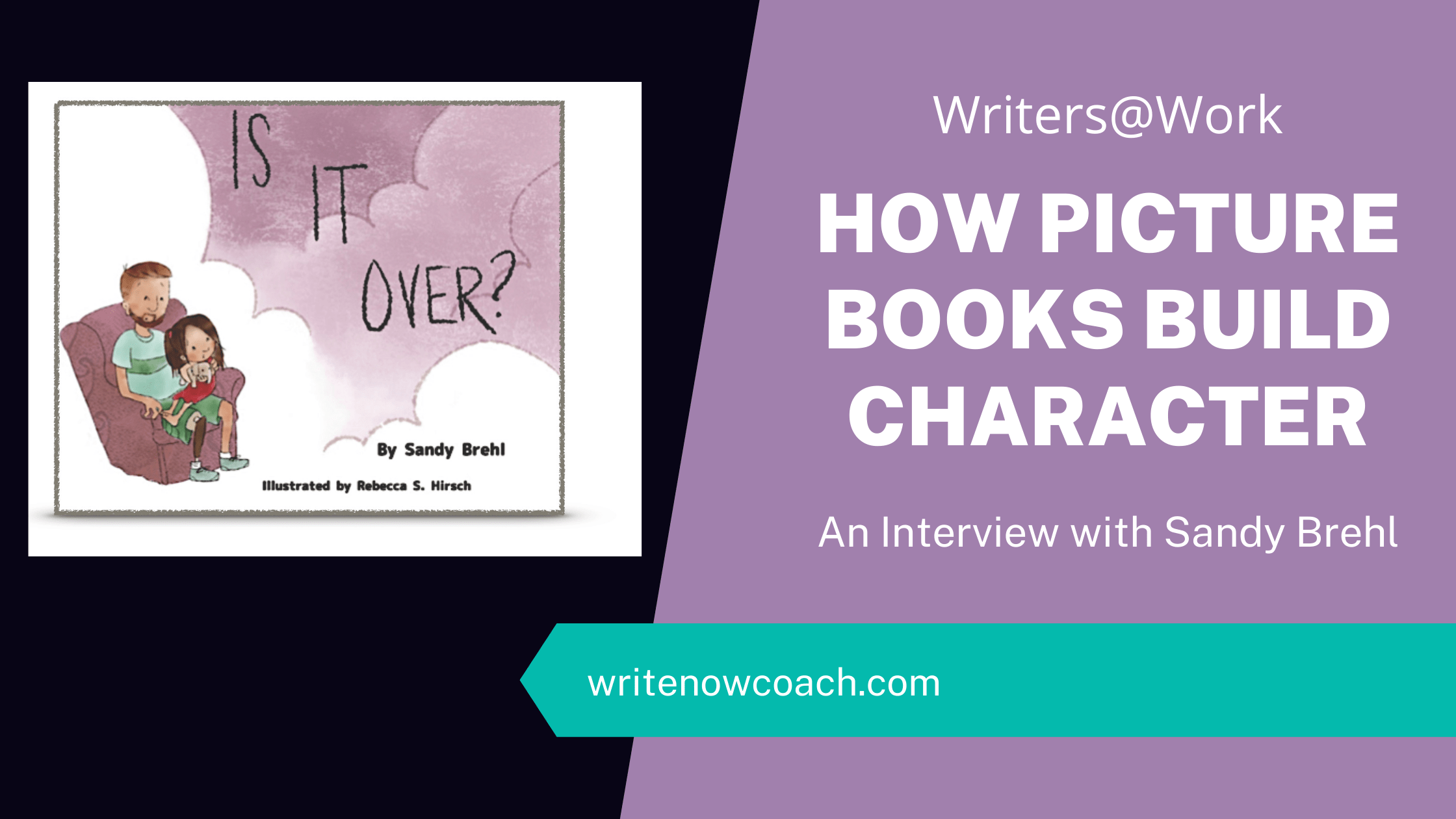
Writers@Work:
How Picture Books Build Character
An Interview with Sandy Brehl
RYM: Tell us about your new book
SB: Thanks so much, Rochelle, for hosting my first picture book cover reveal. My book, IS IT OVER?, celebrates the power of love and storytelling to overcome fear. A prowling, growling thunderstorm sends Risa running to Daddy, begging him to make it stop. When the storm worsens, Risa asks for a story, but Daddy’s time as a soldier changed his childhood view of storms. Recognizing his fear, and inspired by her stuffed toy elephant, Risa summons the courage to find her own story in the storm, one that helps them both.
RYM: Overcoming fear is a theme in many picture books. How did find you find an original take on this important but familiar topic?
SB: You’re right, there are wonderful books that allow young characters to face and overcome their fear of storms. I have many favorites among them, including BOOM! BOOM! BOOM! by Jamie A. Swenson. Her story shows a frightened boy using his stuffed animal friends to self-soothe. Risa’s toy Ivan plays a similar role in IS IT OVER? Salina Yoon’s STORMY NIGHT encourages young ones to find courage inside themselves to face their fears. IS IT OVER? extends and blends those themes by allowing the child, Risa, to recognize fear in Daddy. The strength of family love moves her from panic to empowerment, offering comfort to the adult she loves. It’s empathy and selflessness that nudge her to act.
RYM: We can never have enough books to model and encourage empathy, but that can be tricky to convey. Picture book authors are often advised to “leave room for the illustrations” to expand and enlarge their stories. Could you share a bit about the interaction of text and illustration in your book?
SB: I’m thrilled with the illustrations created by Rebecca S. Hirsch. From her earliest rough sketches, I could tell that Becky’s visual storytelling would open the hearts of readers. In fact, the cover image is a refinement from an initial character sketch.
For example, in the entire text there is only one direct reference to Daddy being a combat veteran:
“My stories won’t help. They changed while I was a soldier”.
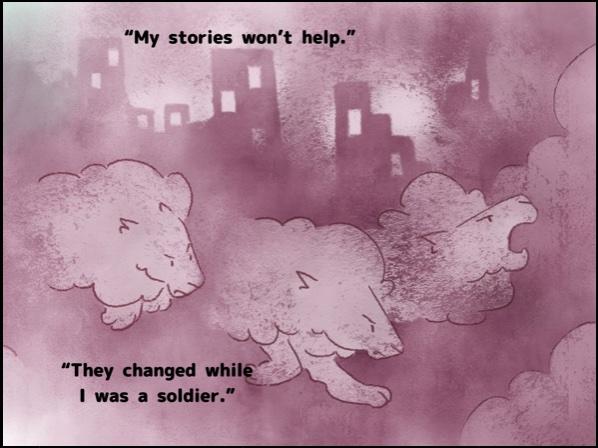
Becky’s lively yet sensitive art allows even very young children to connect with this father-daughter pair. The illustrations wrap the frightening power of thunderstorms in the arms of a loving relationship, using deft touches of humor throughout. In fact, by the time the art was fully developed, I removed many dialogue tags and several bits of narrative text. I genuinely feel that Becky produced art that could easily become a wordless book, putting me out of business! Her talent makes it possible for young people to “read” the story to themselves after just one time through. I love imagining a child clutching a stuffed toy under one arm, this book under the other, inspired to create their own comfort stories amid flashes and rumbles.
RYM: Your previous books are historical middle grade novels. What led you to write picture books?
SB: Actually, I’ve been writing picture book texts for many years, along with poetry. Through extensive picture book reading, reviewing, and with the superb support and coaching of SCBWI programs, I improved over time. In fact, after hearing about the World War Ii experiences of friends I met while visiting Norway, I returned home convinced that I would write a picture book about one particular episode. The research, drafts, feedback, and revisions surrounding that effort resulted (after many years) in a full-length historical novel of resistance during the German occupation in Norway. That was followed by two more books, making it a trilogy.
During those same years, I wrote a lightly fictionalized novel of my family life growing up. It was written as an anniversary gift for my parents, never meant for publication. Those who read it consistently pointed out one short chapter about a sudden thunderstorm during a family vacation at Lake Erie. It was their favorite episode. That led me to extract the chapter and work on many drafts, revisions, critiques. Eventually, it became this picture book
Ironic, isn’t it? My first published novel originated as a picture book idea, and my first picture book publication came from writing a novel. The truth is, stories need to find their best path into the world. That can take a while, but it will never happen unless a writer is willing to continually rethink and revise.
RYM: Since you’ve mentioned your writing practice, do you have any craft suggestions?
SB: Many of the best craft practices I’ve learned have come from others. This book in particular benefited from the advice of NY TIMES bestselling picture book author Pat Zietlow Miller:
Every word in a picture book must earn its place on the page.
That thought led me to remove bits and tags from the text once the art was complete.
Here’s an exercise using dialogue that can be helpful for writers of any-length text.
First, remember that SAID is not a “four-letter” word. When the actual words of dialogue do a thorough job at storytelling, (revealing emotion, raising a question, or shifting the focus of tension), the simplest tag is best.
“Put the knife down,” Milo said.
Yes, Milo might have muttered, or shouted, or begged. But there are other ways to suggest that to the reader.
Take a simple line of dialogue like this one, and explore ways to reveal more without using a tag at all.
Milo’s massive hand gripped Carly’s throat and his lips brushed her ear. “Put the knife down.”
Or
Mommy’s eyes swept from their jelly-smeared puppy to the empty jar to Omar’s enormous grin.
“Put the knife down, sweetie.”
And always remember to:
Read like a writer, and write like a reader.
That means you can do this exercise with material you are reading. Notice dialogue tags that are particularly extended or colorful, then attempt to rewrite that section to reveal the “tag” content within the body of the text.
RYM: This is great segue to something I always ask: What are you reading?
SB: I’m always reading a wide array of picture books for my blog, UNPACKING THE POWER OF PICTURE BOOKS. Recently that included several excellent books related to Earth Week: ONE BOY’S CHOICE: A Tale of the Amazon (Sueli Menezes/Aniuka Siems), MY NANA’S GARDEN (Dawn Casey/Jessica Courtney-Tickle), and the brilliant new picture book WATERCRESS (Andrea J. Wang/Jason Chin), among many others. Each has significance to environmental issues, told through a lens of family love.
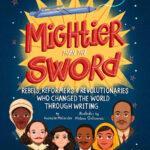 For middle grades and teens, I recently read (and LOVED) your upcoming compilation, MIGHTIER THAN THE SWORD: Rebels, Reformers, and Revolutionaries Who Changed the World Through Writing (Rochelle Melander/Melina Ontiveros). My review can be found here, and I highly recommend it.
For middle grades and teens, I recently read (and LOVED) your upcoming compilation, MIGHTIER THAN THE SWORD: Rebels, Reformers, and Revolutionaries Who Changed the World Through Writing (Rochelle Melander/Melina Ontiveros). My review can be found here, and I highly recommend it.
I also enjoy reading adult fiction and nonfiction. THE PARIS LIBRARY (Janet Skeslien Charles) is a blend of both, and offered a very compelling and informative story of the role of the American Library (and library workers) in Paris during the Second World War.
 About the author: Sandy Brehl is an award-winning author, volunteers as a member of the Wisconsin chapter of SCBWI, and is a Holocaust outreach educator. She has served as a CYBILS AWARD panelist in picture book fiction, nonfiction, and poetry categories since 2016. Learn more about her Norway resistance trilogy here: https://sandybrehlbooks.com/books/#odins-promise
About the author: Sandy Brehl is an award-winning author, volunteers as a member of the Wisconsin chapter of SCBWI, and is a Holocaust outreach educator. She has served as a CYBILS AWARD panelist in picture book fiction, nonfiction, and poetry categories since 2016. Learn more about her Norway resistance trilogy here: https://sandybrehlbooks.com/books/#odins-promise
Visit her website: https://sandybrehlbooks.com.
Find picture book reviews and interviews here:
http://unpackingpicturebookpower.blogspot.com
Twitter: @SandyBrehl and @PBWorkshop
Facebook: https://www.facebook.com/Sandy-Brehl-Author-210490195827843
Learn more about the illustrator, too:
Rebecca S. Hirsch is an illustrator and member of the Wisconsin chapter of SCBWI. She lives with her husband and daughters in Waukesha.
You can find her online at:
https://www.rhirschillustration.com
or as @rhirschillus on Instagram.
PREORDER IS IT OVER?
(Preorders are not available quite yet–but you can put it on your list!)
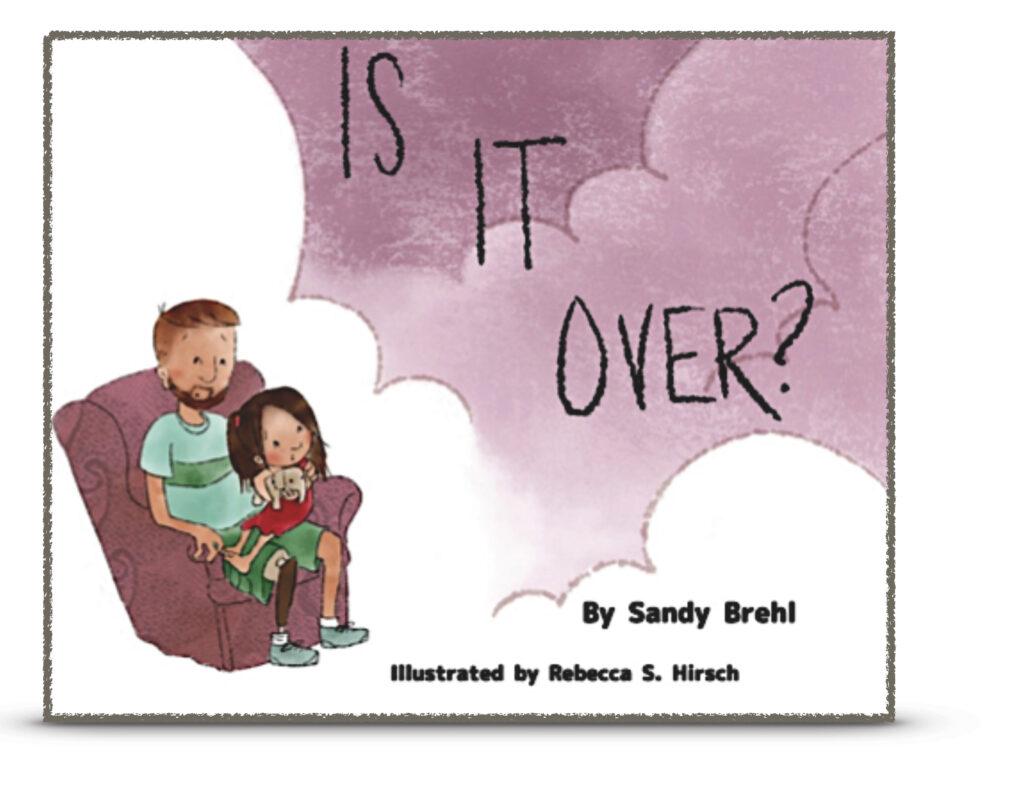
IS IT OVER?
Written by Sandy Brehl
Illustrated by Rebecca S. Hirsch
Trade HC: ISBN: 978-1-952894-32-9
Trade PB: ISBN 978-1-954868-76-2
Ages 4-8 32 pages July 6, 2021
Preorder at PenIt!, Ingram, Amazon, BN, Indiebound.org and independent booksellers in your area!

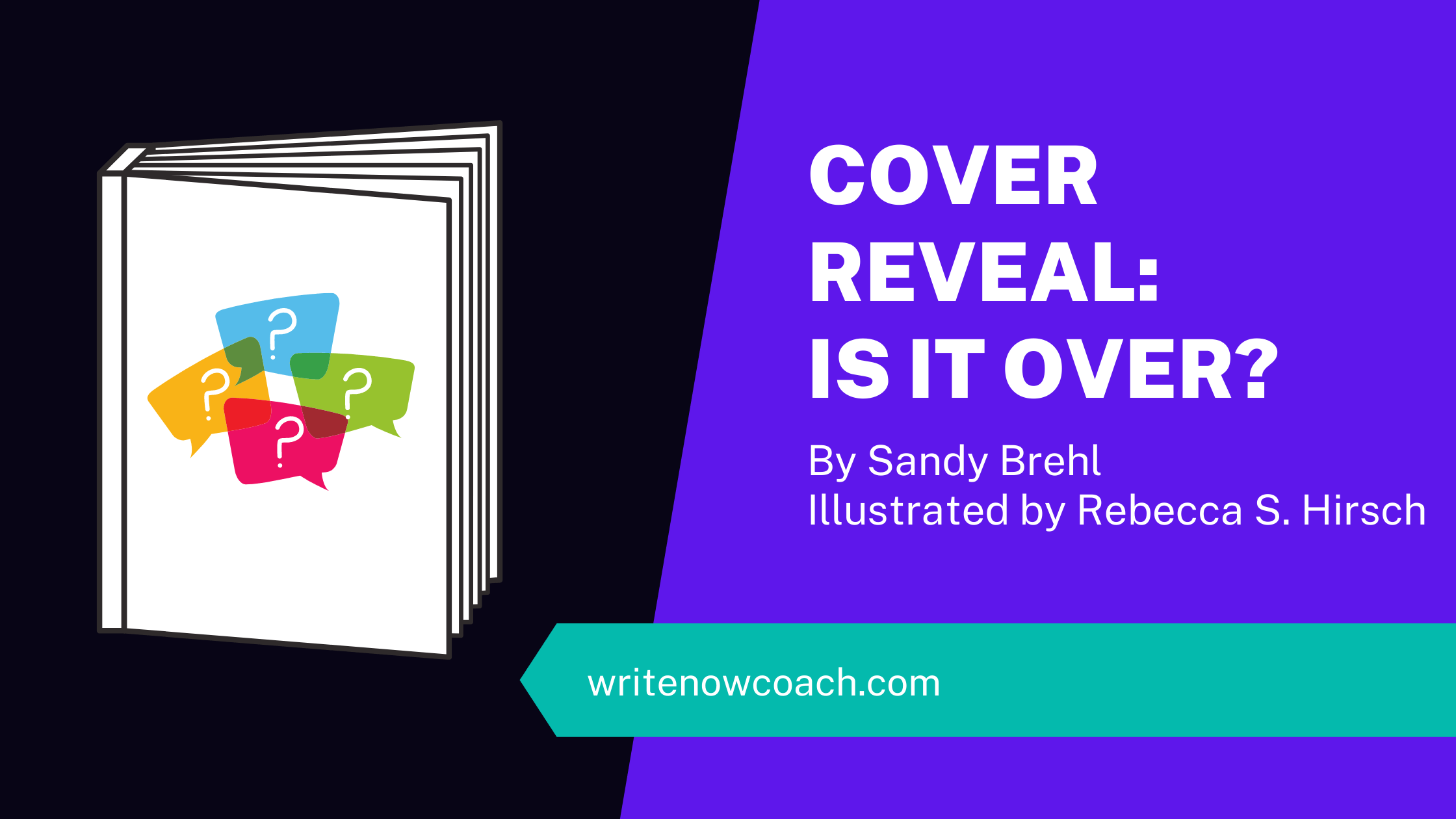








Rochelle, thank you so much for hosting this cover reveal! Just an FYI for your readers, the preorder option is not yet available, but will be in coming weeks. I just can’t wait to see and hear what first time readers think once they can hold it and read it for themselves.
Great interview, Sandy. I can’t wait to read your book. I loved your Middle Grade series.
An excellent interview, Rochelle and Sandy. I especially liked Sandy’s comment that a book needs to find it’s own best path into the world. I’m looking forward to preordering “Is it Over?” and hope you’ll let us know when it’s available.
Sandy,
Please let me know when the preorder is available so I can do so. Thanks for the writing exercise. I loved hearing the story’s history.
Sandy – this is awesome! Rebecca – the art looks stunning! Can’t wait to read this!
Excellent interview, Rochelle and Sandy! Thank you for the great “craft suggestion” question and the great answer and example of dialogue tags. Congratulations Sandy, and Rebecca. This book looks awesome!